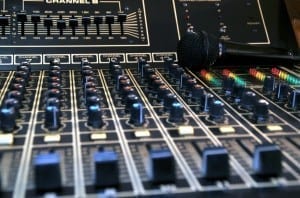When to Use Delay Instead of Reverb to Create Room in a Mix
We’ve written previously about how important reverb can be to getting a great mix. And while reverb can certainly provide the space you need for your mix to really gel, there are times when delay will do a better job of creating that space.

Why Do You Need Space in the First Place?
Whether you’re using reverb or delay, the goal is to provide more space in your mixes. Both tools are designed to recreate the effect of sound waves traveling through the natural space of a room, providing a more natural sound to your recordings.
But the use of reverbs and delay also color the entire sound of your mix, providing ambiance to a track that can build the underlying emotional feel of the song. While reverb tends to be the go-to tool for many engineers, here are a few times you may want to try delay instead.
To Avoid a Washed Out Mix
Using too much reverb on your tracks can quickly result in a “washed out” sound. While this occasionally can be what an engineer is going for, you typically want to use reverb and delay to make a more natural sound, not a muddy mix. Delay can be a great way to avoid a cluttered mix, because it can keep the instruments up front while adding some ambience. The tip of using a slap-back delay below is a good example of how to do this.
On a Fast Vocal
Applying some reverb to a vocal is a great way to help it “sit” correctly in your mix, but occasionally this can do more harm than good. For example, on faster vocals, the reverb often gets lost in the mix, until you turn it up so much that it no longer gives you the sound you want.
When this happens, a great solution is to add a delay. This way you don’t make the delay as prominent, but it still serves its purpose in the mix. A slap-back delay – featuring a single delay sound – can be a great way to do this without muddying up your vocal.
For a Big Guitar Sound
If you’re a fan of The Edge and his guitar sounds for U2, you’ve probably already considered putting a delay on your guitar. Similar to vocals, too much reverb can make a guitar sound too distant and lack the impact it needs to have. A delay, however, can amplify that impact while still making the track seem much bigger and roomier than the dry track.
Use Delay and Reverb
While delay and reverb tend to be an either/or proposition, you can occasionally use both to great effect for certain tracks. For example, after finding a great delay, tack on a small room reverb. This can come in handy if the delay is coming through a bit too sharp in your mix. Beware, however, that adding too much reverb can quickly take your track from a place where it sits nicely in the mix to a washed out mess.




